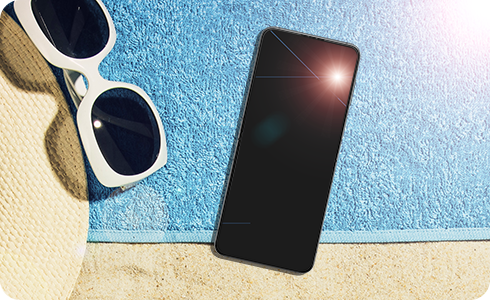Why is your Samsung Galaxy device heating up
Samsung's Galaxy products are designed with system protections to minimise the degradation of product performance in temporary temperature extremes, and battery protections are also in place to limit charging when there is a certain level of heat. However, despite these safeguards, Galaxy devices can emit heat in certain situations and environments.

From using a third-party charger to using features that require a sizable amount of power, there are a number of reasons why your Galaxy device may be giving off heat.
Apps
- App Installation
- Using apps that are processor intensive, such as games, streaming, GPS tracking, and more.
- Using multiple windows or apps to multitask
Data and files
- Restoring or transferring product data
- Uploading or downloading large files
- Using large amounts of data to synchronise with your email or other accounts
Videos
- Taking a video whilst updating or installing an app
- Making a video call whilst downloading a large file
- Playing or recording a video whilst using navigation
Charging
- Using a damaged charger, cord, or external connector
- Using a third-party charger
- Charging with objects, like credit cards, between the device and the charger
- External connector is covered with foreign objects like liquid or dust
Other
- Using the device for an extended period of time
- Initial setup after purchase
- Repeated reboots
- Software updates
- Connecting with other devices
There are some external environmental conditions that can cause your Galaxy device to become hotter than normal even if it is used per official recommendations. Samsung advises that users refrain from using your device for extended periods of time in environments such as:
- Areas with elevated ambient temperatures
Such as: saunas, hot outdoors, unairconditioned indoor spaces - Direct sunlight
- Areas where heat dissipation is difficult
Such as: under a blanket, in the pocket of a heavy coat, in a bag - In front of an electric sheet, heating mat, hot pack, or car heater
- Areas with poor or no signal
Such as: underground, mountainous areas, remote islands, and rural roads
If your Galaxy device is beginning to overheat, there are a few actions you can take to resolve the issue.
- Check for any current software updates, and then regularly check for updates.
- Turn off apps running in the background by initiating "Background usage limits"
Note:
Menu organisation may vary depending on the model and software version of your device.
"Power saving" limits the use of network, data synchronisation, and background location information.
If you find that your device (or charger) is heating up whilst charging, remove the charger from your Galaxy device, close all running apps, and wait for your device to cool down before charging it again.
If you choose to use wireless charging, make sure there are no objects, such as metals and credit cards, between your device and the wireless charger.


If the problem persists, try charging with a different, compatible Samsung charger and USB cable.
Also, be aware that a damaged or incompatible charging cable can cause heat in the charger port.


Notes:
Galaxy smartphone, tablet, and watch batteries are warrantied for one year.
If a Samsung service centre identifies a device manufacturing issue within the warranty period, it will be repaired or replaced free of charge. If the issue is not due to the battery itself but may be due to customer carelessness (negligence), or it occurs after the warranty period, the device may be repaired for a fee.
Light mode is a feature that partially adjusts the maximum processing speed of an AP to improve heat generation and current consumption. Set up Light Mode to minimise heat generation and use your battery efficiently.
Thank you for your feedback!
Please answer all questions.
RC01_Static Content

























